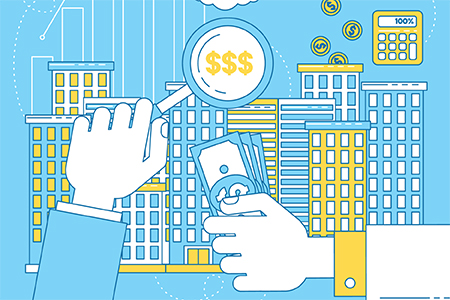Foreign Buyers Snap Up U.S. Real Estate in Unprecedented Surge
Foreign investments in U.S. real estate have surged nearly 50 percent as of late, according to the 2017 Profile of International Activity in U.S. Residential Real Estate from the National Association of REALTORS® (NAR).
The report shows that between April 2016 and March 2017, foreign buyers and recent immigrants purchased over $150 billion in residential property—$153 billion, to be exact. Marking a new survey high, this boost is a 49 percent increase from last year’s $102.6 billion rank.
“In the face of global economic and political uncertainty—that is, Venezuela upheaval, Brexit, Syrian refugees, Russia meddling, and even the very nasty U.S. Presidential election campaigning—people with money were searching for something very safe,” says Lawrence Yun, NAR chief economist and senior vice president of Research. “As a consequence, both the demand for U.S. Treasury bonds and U.S. real estate rose.”
While the report shows an influx of buyers from the top five countries, an increase in sales dollar volume from Canadian buyers seems to be the largest driving factor behind the boom. Canadian transactions increased from last year’s $8.9 billion to a whopping $19 billion, a new high for Canada.
But Canadians are far from the only foreign buyers currently slaying the U.S. real estate game. Despite the rising Canadian numbers, China still reigns as the top country for sales dollar volume for the fourth consecutive year.
“Canadians bought vacation homes in warm weather states, driven largely by the huge housing wealth accumulation in Canadian markets like Toronto and Vancouver,” says Yun. “Chinese bought partly because its economy continued to grow at 6 percent or better. Such a growth rate, though light by recent Chinese standards, is enough to crank out a new billionaire every week. Then consider how many millionaires are being created in China.”
When looking to the future of foreign investments, Christine Hansen of CENTURY 21 Hansen in Fort Lauderdale, Fla. addresses the EB-5 legislation, which is currently up for renewal on September 30. The program, which rewards foreign investors with permanent U.S. residency, is currently offered to buyers who spend $500,000 or more. “There has been talk of raising this amount to $1.35 million,” says Hansen. “This would be very detrimental to the program’s future viability, and would jeopardize the continued draw of direct foreign investment into the U.S.”
To put this in perspective, only 10 percent of foreign buyers paid more than $1 million on a property in the past year. “While the EB-5 program isn’t perfect, reform should be achieved through a legislative process with careful consideration,” stresses Hansen.
“America offers equal private property rights protection to U.S. residents and foreigners,” says Yun. “That’s the big attraction as to why foreigners buy in the U.S. But the drawback is that foreign buyers could be gobbling up properties at the expense of U.S. homebuyers, particularly young, first-time homebuyers. To ensure there’s enough, the policy focus should be about constructing more homes in the U.S., rather than trying to limit foreign buyers.”
Source:RisMedia
Please
contact us in case of Copyright Infringement of the photo sourced from the internet, we will remove it within 24 hours.
